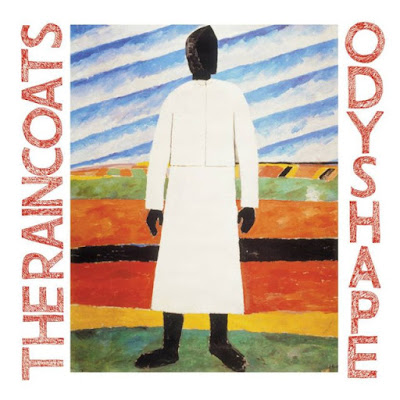Celebrating
its 25th anniversary today is the one-off collaboration between Richard
D. James (Aphex Twin) and Mike Paradinas (μ-Ziq), Expert Knob
Twiddlers, which was released on June 24th, 1996.
The album came
about as a result of James sending out a number of invitations to
various electronic music producers in 1994 offering the opportunity to
collaborate with him. While invitations were sent to the likes of Luke
Vibert, Squarepusher and Cylob, it was Paradinas who managed to get it
together to actually make the sessions happen. Once in the studio, the
two found themselves indulging their mutual senses of humor as well as
their penchant for electronic instrumentation. They also found that,
stylistically, they were plumbing the depths of the retro-lounge music
sensibilities which were just beginning to experience a resurgence at
the time.
The roots of this revival actually go back to the
late 1970s with Industrial music pioneers, Throbbing Gristle, and their
habit of ending their live shows by playing Martin Deny albums and
eventually parodying his LP cover style on TG’s Greatest Hits release.
But it would take another 15 years for the resurgence to hit its peak in
the mid 1990s, propelled by the publication of the ReSearch books,
Incredibly Strange Music (Vols. 1 & 2). The album that resulted
from James & Paradinas’ collaboration would be a kind of fusion of
easy listening with funky electronica.
The humor of the album
can be plainly observed in every aspect from the cover graphics, which
portray the two producers playing a game of Downfall like the box
packaging of a classic 1970s Milton Bradley kid’s game, to the song
titles (Giant Deflating Football, Eggy Toast, The Sound of Beady Eyes),
to the often crudely funny sound samples used in the songs, which
includes things like belching in Upright Kangaroo. It’s clear that they
were having a lot of fun in the studio while working on this album,
though that irreverence may have left some critics a bit ambivalent and
wondering if they were just pissing about or trying to make a serious
album. Personally, I’ve always found it to be a thoroughly enjoyable
listening experience from start to finish and lacks some of the more
frustratingly self-indulgent edgy elements that can make their
respective solo works often mixed bags when it comes to being able to
play the whole album without having to skip that one track that just
makes you want to bat the needle off the record.
After 25 years
on the shelf, I think it still holds up well, though it probably should
have been released earlier than it was. It was in the can as early as
1994 and, had it been issued then, it may have seemed more ahead of the
curve in terms of embracing the easy listening revival, which hadn’t
quite kicked into high gear like it did by the time Expert Knob
Twiddlers was actually released. It would have been seen as more of a
trend setting record than a bandwagon jumper. Despite it’s inside-joke
indulgences, there’s still a forward looking innovation in terms of
integrating the feel of the lounge era with the experimentation of ‘90s
electronica.







